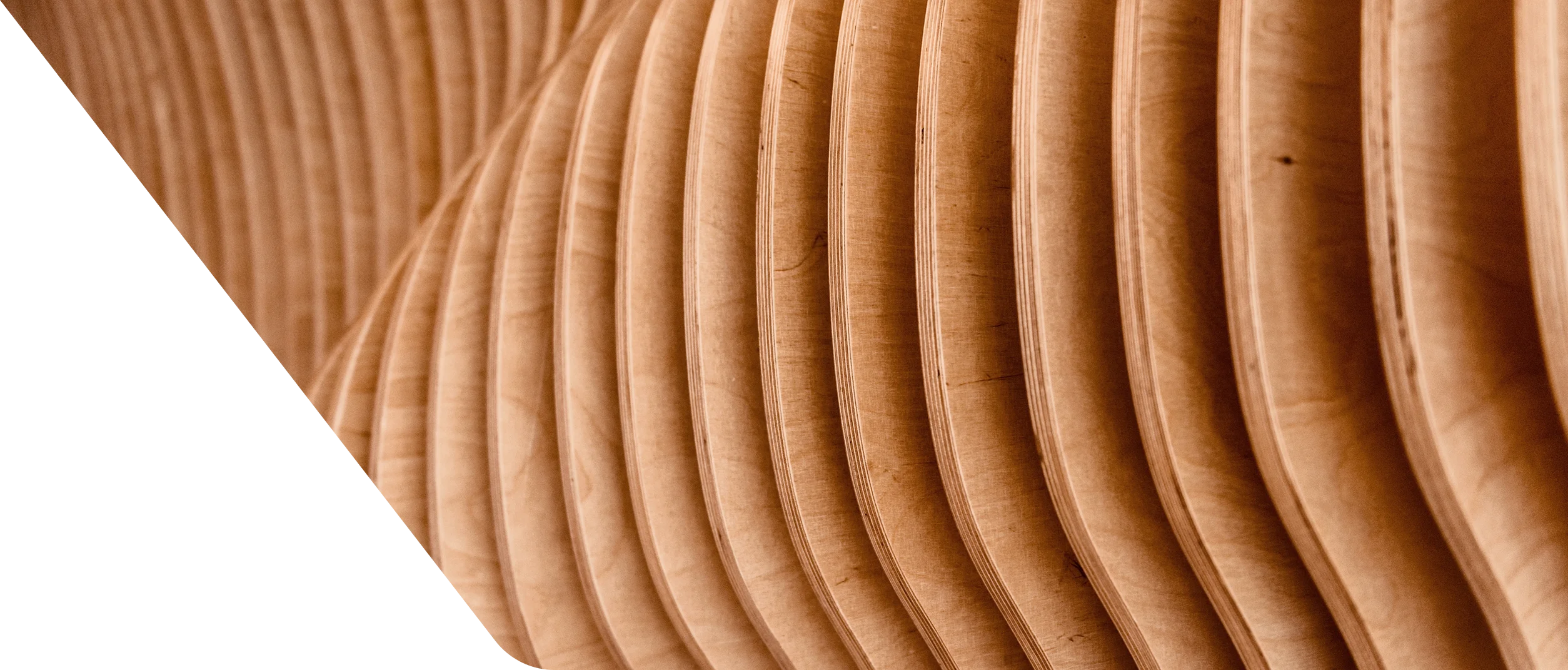ANSI/AWI 0642–2024 - Wood Paneling
3.4 Aesthetic
a) Aesthetic performance, in relation to this standard, refers to and is an evaluation of surfaces exposed following installation.
b) The three levels of aesthetic grades are Premium, Custom, and Economy:
| Premium Grade | Custom Grade | Economy Grade |
|---|---|---|
| The aesthetic grade defining the highest degree of control over materials, workmanship, and manufacture | The aesthetic grade defining a high degree of control over materials, workmanship, and manufacture | The aesthetic grade defining the minimum degree of control over materials, workmanship, and manufacture |
c) Cores shall not be exposed.
d) Delamination and separation is not permitted.
e) Final adjustments for gaps, flushness, and alignment shall be in accordance with ANSI/AWI 0620 – Finish Carpentry/Installation (latest edition).
f) Vertical surfaces with a defined grain and/or directional pattern shall be fabricated and installed with the grain or pattern oriented vertically.
g) Ceiling surfaces with a defined grain and/or directional pattern shall be fabricated and installed with the grain or pattern oriented parallel to the longest room dimension.
h) Exposed surfaces shall be consistent for color, pattern, and/or wood species throughout the entire project.
i) Exposed fasteners are not permitted, except at access panels. All other fasteners shall be inconspicuous.
j) Fasteners, at exposed surfaces, shall be kept to a minimum, countersunk, filled, and compatible for color. Wherever possible, penetrate through quirks and/or reliefs.
k) A maximum of 19.1 mm [.750”] reveal is permitted at the top of wall panels to allow lift on clearance of panel.
l) Surfaces requiring factory finish shall be finished in accordance with ANSI/AWI 0400 Factory Finishing (latest edition).
3.4.1 Veneer, Transparent Finish
a) Exposed surfaces of adjacent veneer panels shall be:
| Premium | Custom | Economy |
|---|---|---|
| Well-matched for color and grain | Compatible for color and grain | Compatible for color and grain |
b) Exposed surfaces of adjacent veneer and solid wood components shall be:
| Premium | Custom | Economy |
|---|---|---|
| Well-matched for color and grain | Compatible for color and grain | Compatible for color and grain |
c) Visible end grain at exposed surfaces shall be:
| Premium | Custom | Economy |
|---|---|---|
| Not permitted | Compatible for color and grain | At the option of the manufacturer/supplier |
d) Panels, when divided with veneer grain, shall be:
| Premium | Custom | Economy |
|---|---|---|
| Aligned vertically and/or horizontally, with a maximum grain alignment variance of 3.2 mm [.125”] | Aligned vertically and/or horizontally, with a maximum grain alignment variance of 6.4 mm [.250”] | Aligned vertically and/or horizontally at the option of the manufacturer/supplier |
e) Figure and/or heart progression shall be:
| Premium | Custom | Economy |
|---|---|---|
| Uniform and natural between adjacent panels and shall not exceed 12.7 mm [.500”] | Uniform and natural between adjacent panels and shall not exceed 25.4 mm [1”] | At the option of the manufacturer/supplier |
f) Where veneer is machined through to create a reveal in the body of a panel, panels shall have solid wood let into the core before the veneer is applied; however, reveals of 3.2 mm [.125]” or less in width let into MDF to a maximum depth of one third of the core thickness do not require solid wood if finished same as exposed finish (See Figure 150).
g) Bleed-through of adhesive at veneer joints that visually affect an applied finish are not permitted.
h) Cathedral-type grain pattern shall be achieved by a single component in “AA” face grade or the split heart method in face grades “A – D” and each half of a split heart shall be subject to the minimum component width requirements for face grade “B.”
a) When more than one panel set (six to twelve panels) is required, sequence matching between sets is not required.
b) When end-matched, full width panel sets shall maintain balance match.
c) Panel sets that are selectively reduced in width are not required to maintain balance match.
a) Shall be balance matched.
b) When veneer flitch quantity does not allow for sequence matching of all panels within the entire room, then a flitch transition shall be at changes in plane (e.g.corners) and/or wall openings.
c) Panel(s), when reduced in width, shall maintain balance match, including makeup/remainder panels.
d) Sequencing doors to adjoining panels shall be specified and single sourced. Door shall be manufactured to meet ANSI/WDMA I.S.1A (latest edition)
e) Side veneer loss between sequenced adjacent panels shall not exceed:
| Premium | Custom | Economy |
|---|---|---|
| 25.4 mm [1”] | 38.1 mm [1.500”] | At the option of the manufacturer/supplier |
f) After edge trimming, width of trimmed edge remainder leaf shall not exceed:
| Premium | Custom | Economy |
|---|---|---|
| 12.7 mm [.500”] less than the adjoining leaf | 25.4 mm [1”] less than the adjoining leaf | At the option of the manufacturer/supplier |
g) When end matching is required, veneer misalignment shall not exceed:
| Premium | Custom | Economy |
|---|---|---|
| 4.8 mm [.188”] | 9.5 mm [.375”] | At the option of the manufacturer/supplier |
a) Blueprint-matched panel sets that are selectively reduced in width shall be balance-matched with veneer alignment at common size panels, make-up/remainder panels, and components.
b) When veneer flitch quantity does not allow for sequence matching of all panels within the entire room, then a flitch transition shall be at changes in plane (e.g. corners) and/or wall openings.
c) Sequencing doors to adjoining panels shall be specified and single sourced. Door shall be manufactured to meet ANSI/WDMA I.S.1A (latest edition).
d) Side veneer loss between sequenced adjacent panels shall not exceed:
| Premium | Custom | Economy |
|---|---|---|
| 25.4 mm [1”] | 38.1 mm [1.500”] | At the option of the manufacturer/supplier |
e) When end matching is required, veneer misalignment shall not exceed:
| Premium | Custom | Economy |
|---|---|---|
| 4.8 mm [.188”] | 9.5 mm [.375”] | At the option of the manufacturer/supplier |
f) At doors and other components adjoining panels, the figure and/or heart progression shall be uniform between adjacent panels and not exceed:
| Premium | Custom | Economy |
|---|---|---|
| 38.1 mm [1.500”] | 50.8 mm [2”] | At the option of the manufacturer/supplier |
3.4.2 Stile and Rail
a) Where veneer is machined through to create a reveal in the body of a panel, panels shall have solid wood let into the core before the veneer is applied; however, reveals of 3.2 mm [.125]” or less in width let into MDF to a maximum depth of one third of the core thickness do not require solid wood if finished same as exposed finish (See Figure 150).
b) Applied moulding shall be securely attached.
c) Cores of panel product materials shall not be exposed.
3.4.3 Decorative Laminate
a) Material, pattern, and color shall be as specified and, if not specified, shall be at the option of the manufacturer/supplier.
b) Material shall be of one color or pattern per room, with a maximum of five different colors or patterns per project.
c) Patterned or wood grain material shall be matched, provided the total length or widthdoes not exceed the maximum length or width of the available sheet. Match may not be obtainable for lengths or widths greater than available sheet size.
d) If face joints are required, the number of joints shall be determined by the largest size available from the sheet material manufacturer.
e) Plumbness at patterns shall not exceed:
| Premium | Custom | Economy |
|---|---|---|
| 3.2 mm [.125”] in 2440 mm [96”] | 4.8 mm [.188”] in 2440 mm [96”] | 6.4 mm [.250”] in 2440 mm [96”] |
f) Alignment variations at patterns shall not exceed:
| Premium | Custom | Economy |
|---|---|---|
| 1.6 mm [.063”] | 3.2 mm [.125”] | 6.4 mm [.250”] |
g) Gaps at butted edges (See Figure 47-D) glued to the same piece of core shall not exceed:
| Premium | Custom | Economy |
|---|---|---|
| 1 occurrence of .2 mm [.008”] x 127 mm [5.0”] in any 6 sq m. [65.0 sq ft.] | 2 occurrences of .4 mm [.016”] x 127 mm [5.0”] in any 6 sq m. [65.0 sq ft.] | 3 occurrences of .8 mm [.031”] x 127 mm [5.0”] in any 6 sq m. [65.0 sq ft.] |
h) Flushness at butted edges (See Figure 52-I) shall not exceed:
| Premium | Custom | Economy |
|---|---|---|
| .1 mm [.004”] | .2 mm [.008”] | .3 mm [.012”] |
3.4.4 Solid Surface
a) Color shall be selected from manufacturer/supplier’s standard product line.
b) Finish shall be selected from manufacturer/supplier’s standard product line.
c) Exposed edges shall be finished to match panel face.
3.4.5 Solid Phenolic
a) Color shall be selected from manufacturer/supplier’s standard product line.
b) Finish shall be selected from manufacturer/supplier’s standard product line
3.4.6 Edges
a) Panel parts, visible splines, and reveals shall be edgebanded with solid wood, veneer, or veneer tape a minimum of .5 mm [.018”] thick and:
| Premium | Custom | Economy |
|---|---|---|
| Same species as panel face and well-matched for color and grain | Same species as panel face and compatible for color and grain | Same or compatible species at the option of the manufacturer/supplier |
b) Edgebanding may be applied before or after the face material.
c) Finger joints in veneer tape used as edgebanding are permitted.
d) Solid wood when applied as an exposed edge, finger joints are:
| Premium | Custom | Economy |
|---|---|---|
| Not permitted | Permitted at one per 2438 mm [96”] of edge length | Permitted |
a) Panel parts, visible splines, and reveals shall be filled and sanded MDF; or edgebanded with paintable PVC, paintable ABS, closed-grain hardwood veneer, or closed-grain solid wood.
b) Solid wood when applied as an exposed edge, finger joints are:
| Premium | Custom | Economy |
|---|---|---|
| Not permitted | Permitted at one per 2438 mm [96”] of edge length | Permitted |
a) Panel parts, visible splines, and reveals shall be edgebanded or MDF core painted compatible to exposed face, to preclude show-through of core.
b) Edgebanding may be applied before or after the face material.
c) Edges shall be HPDL, PVC, or ABS a minimum of .5 mm [.018”] thick and a maximum of 3 mm [.118”] at the option of the manufacturer/supplier.
d) PVC and ABS edgebanding thicker than 1 mm [.039”] shall be radiused or beveled on edges and corners.
e) PVC and ABS shall be compatible with the exposed face.
f) HPDL edgebanding shall match exposed surfaces.
3.4.7 Tolerances
a) Sharp edges shall be eased.
b) Flat wood surfaces require a minimum of:
| Premium | Custom | Economy |
|---|---|---|
| 150 grit sanding | 120 grit sanding | 15 KMPI or 100 grit sanding |
c) Profiled and shaped wood surfaces require a minimum of:
| Premium | Custom | Economy |
|---|---|---|
| 120 grit sanding | 20 KMPI or 120 grit sanding | 15 KMPI or 100 grit sanding |
d) Turned wood surfaces require a minimum of:
| Premium | Custom | Economy |
|---|---|---|
| 180 grit sanding | 120 grit sanding | 15 KMPI or 100 grit sanding |
e) Visible sanding marks, excluding turned surfaces, shall be inconspicuous.
f) Tear out, nicks, and/or hit and miss machining is not permitted when visible after installation.
g) Glue or joint filler (putty), when used, shall be inconspicuous and match the adjacent surface for smoothness.
a) Edges shall be machined flush and filed, sanded, or buffed to remove machine marks and sharp edges.
b) Overlap (See Figure 23-F) shall not exceed:
| Premium | Custom | Economy |
|---|---|---|
| .1 mm [.004”] for a maximum length of 25.4 mm [1”] in any 1219 [48”] run | .1 mm [.004”] for a maximum length of 25.4 mm [1”] in any 610 mm [24”] run | .1 mm [.004”] for a maximum length of 50.8 mm [2”] in any 305 mm [12”] run |
c) Chip-out shall be inconspicuous (See Figure 24).
d) Over-machined (See Figure 25-H) removal of color or pattern of face material shall be limited to:
| Premium | Custom | Economy |
|---|---|---|
| .8 mm x 38.1 mm [.031” x 1.500”] and shall not occur within 1829 mm [72”] of a similar occurrence | .8 mm x 76.2 mm [.031” x 3”] and shall not occur within 1524 mm [60”] of a similar occurrence | 2.4 mm x 152.4 mm [.094” x 6”] and shall not occur within 1219 mm [48”] of a similar occurrence |
a) Joints in Product shall be assembled to meet the tolerances defined within this standard and be securely attached, with any adhesive residue removed from exposed surfaces.
b) Gaps at factory joints not exceeding the widths indicated shall be permitted if filled with color compatible material.
c) Gaps at miter or butt joinery shall not exceed:
| Premium | Custom | Economy |
|---|---|---|
| .3 mm [.012”] by 20% of the joint length | .4 mm [.016”] by 20% of the joint length | .6 mm [.025”] by 20% of the joint length |
d) Gaps at parallel surface joints shall not exceed:
| Premium | Custom | Economy |
|---|---|---|
| .3 mm x 101.6 mm [.012” x 4”] and shall not occur within 1829 mm [72”] of a similar gap in the same joint | .4 mm x 152.4 mm [.016” x 6”] and shall not occur within 1524 mm [60”] of a similar gap in the same joint | .6 mm x 229 mm [.025” x 9”] and shall not occur within 1219 mm [48”] of a similar gap in the same joint |
e) Gaps at exposed surface edge joints shall not exceed:
| Premium | Custom | Economy |
|---|---|---|
| .3 mm [.012”] | .4 mm [.016”] | .6 mm [.025”] |
f) Seams in panel face shall be plumb within:
| Premium | Custom | Economy |
|---|---|---|
| 3.2 mm [.125”] in 2440 mm [96”] | 4.8 mm [.188”] in 2440 mm [96”] | 6.4 mm [.250”] in 2440 mm [96”] |
a) Wood to wood at miter or butt joinery shall not exceed:
| Premium | Custom | Economy |
|---|---|---|
| .1 mm [.004”] | .2 mm [.008”] | .3 mm [.012”] |
b) Wood to non-wood at miter or butt joinery shall not exceed:
| Premium | Custom | Economy |
|---|---|---|
| .3 mm [.012”] | .4 mm [.016”] | 6 mm [.025”] |
c) Non-wood to non-wood at miter or butt joinery shall not exceed:
| Premium | Custom | Economy |
|---|---|---|
| .3 mm [.012”] | .4 mm [.016”] | 6 mm [.025”] |
a) As a lineal ratio, per 305 mm [12”] in the diagonal, width, and/or length, warp of Product (See Figure 5-E) shall not exceed:
| Premium | Custom | Economy |
|---|---|---|
| .8 mm [.031”] or portion thereof | 1.2 mm [.047”] or portion thereof | 1.6 mm [.063”] or portion thereof |
(Measurements for warp shall be taken on the concave face of the panel.)
Example: A panel with dimensions of 813 mm [32”] x 1219 mm [48”], as illustrated (See Figure 5-E) will have a diagonal measurement of 1465 mm [57.689”]. In custom grade, the maximum distance between the string and the face of the panel will be 5.8 mm. (1465 mm / 305 mm x 1.2 mm = 5.8 mm [57.689” / 12” x .047” = .226”])



